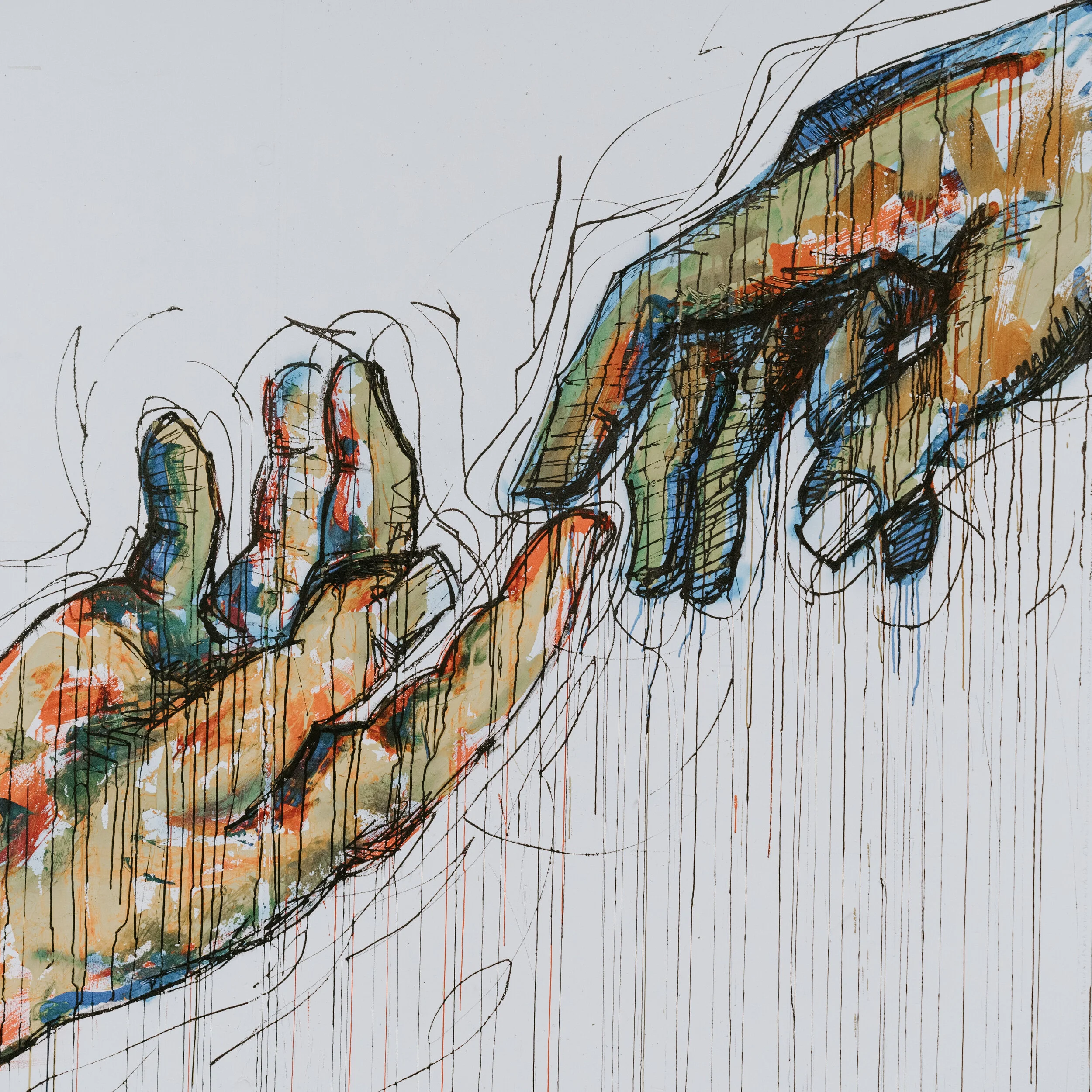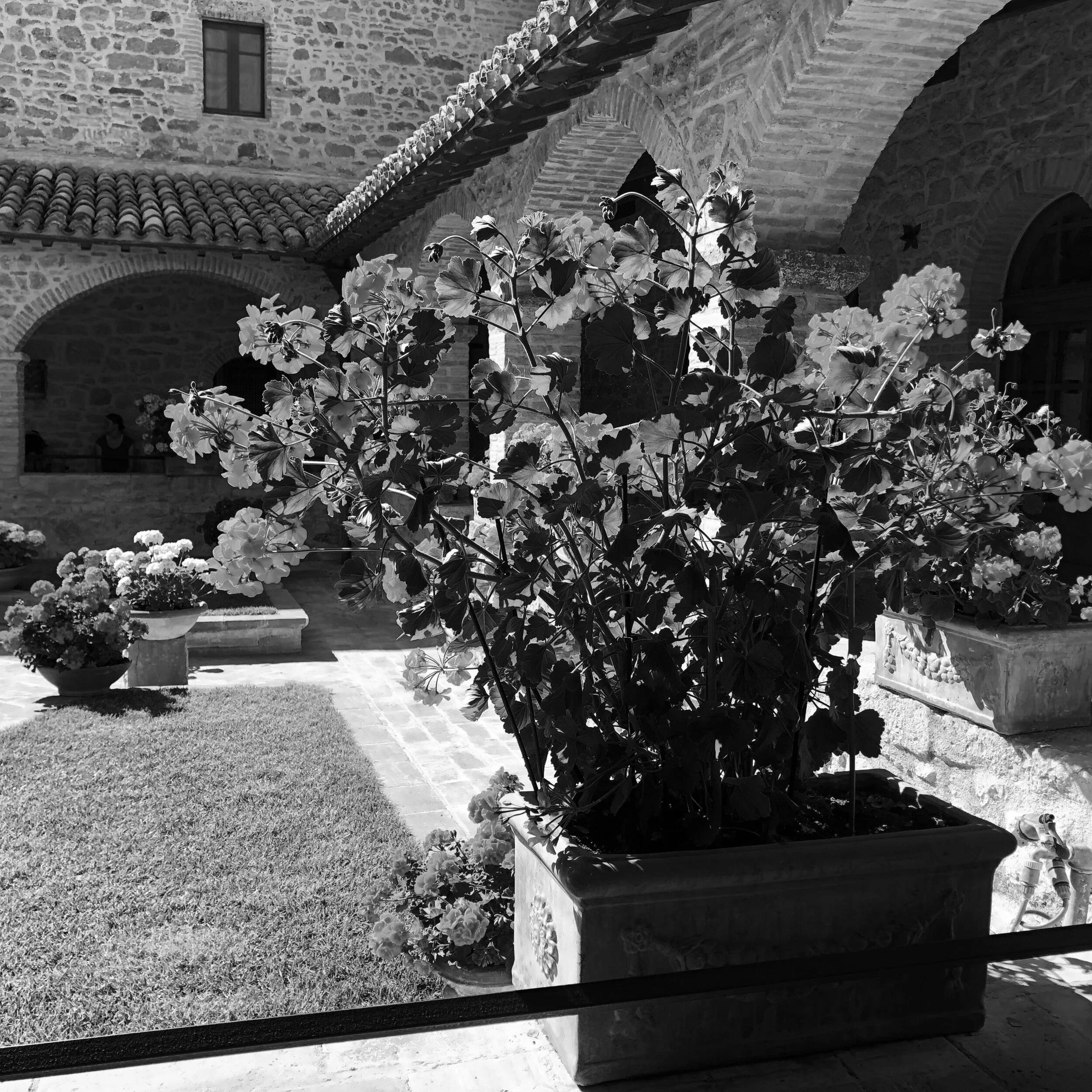THEME
Francis and Clare’s nonviolent actions. Not only did these events resolve specific conflicts, they also symbolized alternatives to cultural and religious patterns of violence including war, marginalization, retributive justice, civil strife, Church-state conflict, and the domination of nature
Sites
Monte Casale (the robbers); The Countryside (the lepers); Arezzo (the factions).
Session 3
Welcome! This week we begin to follow in the footsteps of Francis and Clare’s “nonviolent actions.” How might they encourage us to live the nonviolent life today, in our time of crisis and opportunity?
Prayer
Where there is charity and wisdom, there is neither fear nor ignorance.
Where there is patience and humility, there is neither anger nor disturbance.
Where there is poverty with joy, there is neither greed nor avarice.
Where there is rest and meditation, there is neither anxiety nor restlessness.
Where there is fear of the Lord to guard an entrance, there the enemy cannot have a place to enter.
Where there is a heart full of mercy and discernment, there is neither excess nor hardness of heart.
— St. Francis of Assisi
Source: Regis J. Armstrong, O.F.M. Cap., Wayne Hellman, O.F.M. Conv., and William Short, O.F.M., eds., Francis of Assisi: Early Documents, Vol. I, The Saint (Hyde Park, NY: New City Press, 1999), p. 136.
The Robbers - Monte Casale
The Lepers - Beyond the World
The Factions - Arezzo
Nonviolent Action
Closing
Fresco Cycle in the Upper Church of Saint Francis Basilica, Assisi
Readings
Here are a couple of readings, if you like:
On Pilgrimage: A Personal Reflection
Saint Francis and Gospel Nonviolence
The Zoom link being used for every session is:
https://us02web.zoom.us/j/82948329997?pwd=NXZkUGJWOGJLMU5wcjFTeVh4eFU3UT09
Meeting ID: 829 4832 9997
Passcode: 015625
THE ROBBERS
After Francis dramatically renounced his worldly goods and set off on his new life, he was almost immediately attacked by robbers on his way to Gubbio. Long after this experence, we are told in The Little Flowers of Saint Francis, that he encountered robbers again. As we follow in the footsteps of Francis, we are beginning to explore a series of what can be called nonviolent actions, including in this story about the robbers near Monte Casale. To continue, click here.
THE LEPERS
“The Lord gave me, Brother Francis, thus to begin doing penance in this way: for when I was in sin, it seemed too bitter for me to see lepers. And the Lord . . . led me among them and I showed mercy to them. And when I left them, what had seemed bitter to me was turned into sweetness of soul and body. And afterwards I delayed a little and then I left the world.” (Francis of Assisi, “The Testament,” lines 1-3. See Francis of Assisi: Early Documents, vol. 1 [New City Press: 1999], 124.)
Francis’ metanoia, his conversion, is marked by an encounter with the most rejected and marginalized persons of his age. He is on a journey of profound change, where the time-worn scripts no longer make sense: aversion, avoidance, accommodation, or attack. He reaches, instead, for connection, kinship. This is not a threat or a horror, but kin. To continue, click here.
Session 3 Video
AUDIO BONUS:
AT THE BEGINNING
TRACK 4: Making Peace in the War Zone
THE FACTIONS
“It happened once that he came to Arezzo at a time when the whole city was shaken by a civil war that threatened its destruction. Given hospitality in the outskirts, he saw demons over the city leaping for joy and arousing the troubled citizens to mutual slaughter. In order to put to flight those seditious spiritual powers, he sent Brother Sylvester, a man of dove-like simplicity, before him as a herald, saying: "Go in front of the city gate and, on behalf of Almighty God, command the devils to leave at once!…" To continue, click here.








